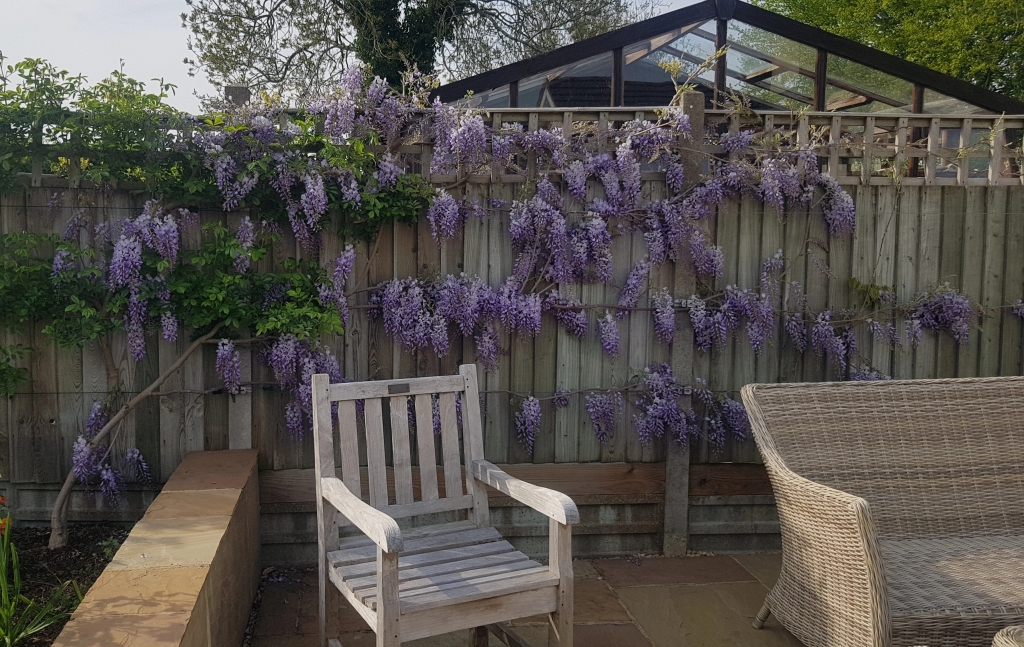
Good weather at last! Warm sunny days have boosted growth in already moist soil and things are looking great! This shot of the middle garden captures the intensity of the late afternoon sun. The Thalictrum, in particular, has really enjoyed all the rain.

The China rose, Rosa mutabilis, is always early; her delicate floaty pink petals enjoying the conditions. This amazing rose will flower consistently from now until November without a break. I find it needs a bit of support but that may be because it is relatively young and hasn’t got a lot of roots to anchor it yet.

The evergreen Agapanthus africanus ‘Glenavon’ is excelling itself this year with 14 flower spikes currently, and possibly more to come. This usually means it is pot bound and ready to be divided! Overwintered completely dry in the cold greenhouse for 5 months, and then fed and watered like mad, seems to mimic the conditions it would find in its native South Africa. The only thing missing is fragrance. If it was pleasantly scented it would be amazing.

Easy to overlook, but shouting to be seen and heard is this tiny Euphorbia cyparissias peeping out beneath some Lysimachia ‘Firecracker’. An unintended combination, but a pleasing one nevertheless.


Thanks to this blog, a kind friend gave me some pink Hesperis matronalis last year to compliment my forest of white. I now have a modest quantity of both. It is a very pleasant native but can be a thug if it likes your garden. It seeds prolifically and would take over this border if I allowed it free reign. A very useful early spring flower to break up the mass of green. Pleasantly scented, particularly in the evening, as it is also pollinated by moths and other night flying insects as well as bees and butterflies during the day

.Another kind friend gave me what she thought were 4 white camassia bulbs which have turned out to be Anthericum liliago, commonly called St. Bernard’s Lilies. I grew them in a pot this year, but now I know what they are, I will find a suitable spot in the garden. The creamy white star shaped flowers do resemble camassia and they are in the same family, Asparagaceae.

And finally for this week, the earliest flowering Thalictrum in my garden is always this Thalictrum aquilegiifolium which found its way under the beech hedge some years ago and seems to enjoy the company. The frothy pink flowers are loved by bees and provide much needed early nectar. Easy to grow, tough as old boots and flowers for weeks on end.
Have a great weekend.
David

































